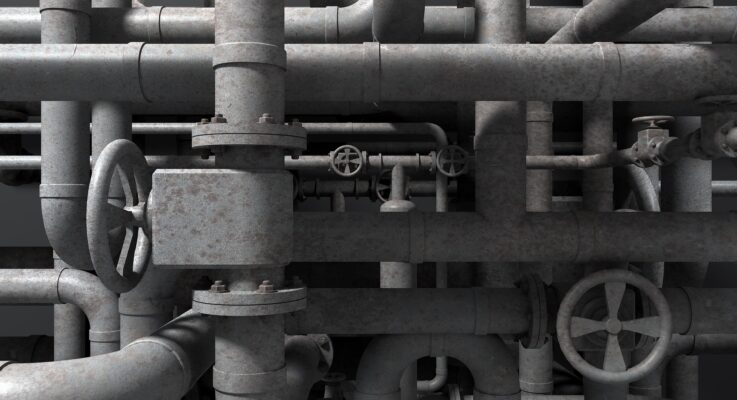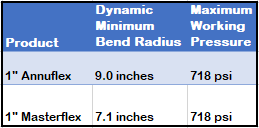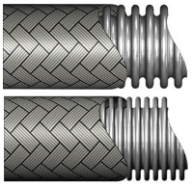
Can I Afford to Upgrade my Piping System Now?
With everything going on in the world right now a lot of companies are prioritizing finding ways to reduce costs. Budgets are being cut, projects are getting canceled, and everyone is trying to find ways to do more with less. Given this context, it’s possible that piping system upgrades and routine maintenance may be overlooked depending on the extent of other repairs and maintenance needed in a facility. However, neglecting a piping system update can carry risks of failure and corresponding downtime, which can ultimately cost a facility. Luckily, there are a few ways to upgrade a piping system that can save time and labor and result in an overall gain for the customer. Let’s take a look at some of the options available when updating a piping system and how they can help a facility successfully balance budget and performance.
Hose Flexibility
One way to achieve an affordable piping system upgrade is to utilize a more flexible assembly. This can be done a few different ways, depending on the definition of flexibility that provides value to the customer’s application. Let’s explore some of the ways metal hoses and expansion joints can deliver flexibility.
Bend Radius

One way to examine flexibility is by looking at a hose’s minimum bend radius– how tightly it’s able to be flexed without damaging the corrugations. Without changing the inner diameter (ID) or other dimensions of the hose, making a more flexible hose in this regard is often achieved by increasing the number of corrugations per foot. With more corrugations per foot a hose is able to be bent to a smaller minimum bend radius, meaning it can be bent tighter. (This is the difference between our Annuflex and our Masterflex products.)
Even if the smaller minimum bend radius is not explicitly necessary for the application, using a hose that can be bent more tightly can prove advantageous. When a hose is bent the bending stress is dived among each of the corrugations. When using a hose with more corrugations per foot, any bending stresses exerted on the hose are broken up over a larger number of corrugations. This means that each corrugation experiences less stress as the hose cycles. Because each corrugation experiences a smaller share of stress, the assembly as a whole is likely to fatigue more slowly and see a longer working life. By providing additional working life, using a more flexible assembly by this definition can provide long-term overall cost savings.
Force to Bend

Another way to look at hose flexibility is by considering the amount of force required to bend a hose. One factor that contributes to the force needed to bend a hose is wall thickness. Generally, a hose with a lesser wall thickness will require less force to bend. This may not seem like much, but from the perspective of a maintenance technician installing an 8″ ID assembly with bulky fittings can become quite cumbersome (especially if there’s more than one!)
From this perspective, using an assembly with a thinner wall that requires less exertion to bend can ultimately benefit a facility by helping their maintenance crew. By having to exert less time and energy per installation, installers can preserve their energy, install assemblies more quickly, and improve safety during hose replacements. In this case, designing an assembly with both the application and the installer in mind can ultimately create a positive return for a facility.
Recycling Fittings
Waste not, want not! If an assembly is due to be replaced and the existing flanges are still in good condition they can often be sent back to us and reused in making a new assembly thanks to our in-house machining department. Once we receive the recycled fittings, our machining department is able re-thread any fittings or machine any sealing surface to virtually like new. While this may not be appropriate for every application (depending on the media, wear, and applicable codes) it could help reduce the overall cost of replacement and is worth inquiring about.
Adding an Accessory
I know what you’re probably thinking- Accessories? Won’t that just add more to my assemblies? In the short run- yes. However, adding the right accessory to your hose can potentially help you save in the long-run by avoiding unplanned outages and unexpected repairs and improving overall working life. For example, in an environment where hoses could experience a significant amount of external damage from debris (like in a steel mill) it would be beneficial to provide some additional protection to an assembly by adding a stripwound guard. Or, if you’re conveying an abrasive media (like in some bulk transfer applications) that can gradually wear away the assembly adding a liner can help protect and preserve the internal hose wall. Regardless of the application, there is oftentimes an accessory available that can help promote the longevity of your assemblies- just ask!
Looking for an Affordable Upgrade to Your Piping System?
If you’re in need of upgrades or replacements for your piping system, contact your local Hose Master distributor, Gallagher Fluid Seals, or reach out to Hosemaster with any questions or concerns. No matter the application, we’re ready and able to help you find ways to get better budget efficiency from your piping system.
The original article was written by Abby Svitana, Market Analyst at Hose Master.
